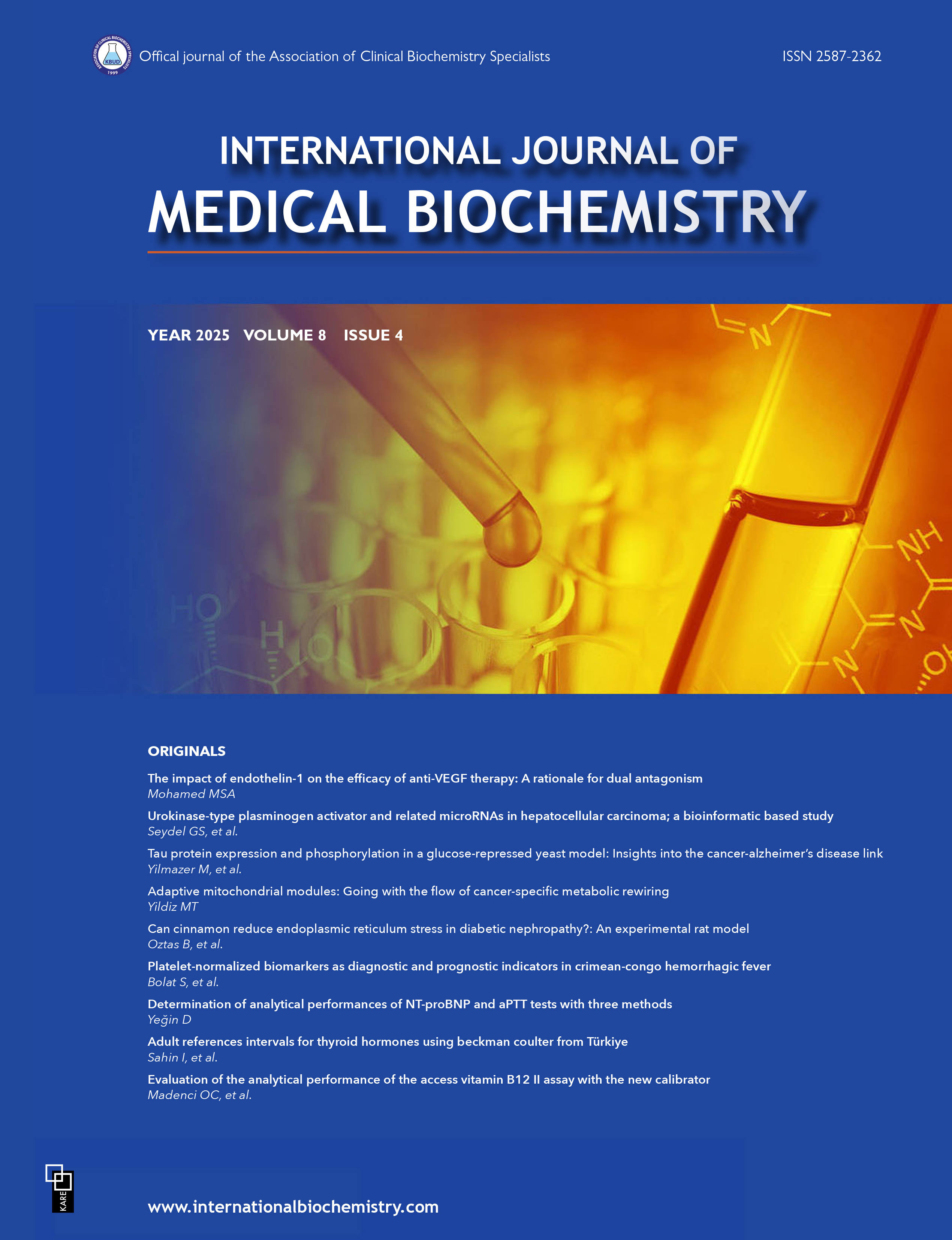Decreased Elabela level in the first 24 hours of ST Elevation Myocardial Infarction patients
Revsa Evin Canpolat Erkan1, Mehmet Sahin Adiyaman21Department of Medical Biochemistry, Dicle University Faculty of Medicine, Diyarbakir, Türkiye2Department of Cardiology, Diyarbakir Gazi Yasargil Training and Research Hospital, Diyarbakir, Türkiye
INTRODUCTION: Cardiovascular diseases are among the leading causes of death worldwide. ST Elevation Myocardial Infarction (STEMI) is one of the most important causes of cardiovascular mortality and morbidity. It has been determined that Elabela (ELA), a member of the apelinergic system, increases myocardial contractility and coronary vasodilation, and decreases blood pressure. The aim of this study was to evaluate the relationship between circulating ELA levels and various clinical, biochemical, and angiographic parameters in STEMI patients undergoing primary percutaneous coronary intervention (PCI).
METHODS: Seventy-four patients hospitalized with the diagnosis of STEMI who underwent coronary angiography and
primary PCI, and seventy-four patients with chest pain but no pathology detected in coronary angiography, were included in the study as the control group. Coronary lesion severity was measured using the SYNTAX score tool. Routine laboratory tests and ELA levels were measured.
RESULTS: Plasma levels of ELA were significantly lower in patients with STEMI (0.68±0.68 ng/mL) than in controls
(1.34±0.88 ng/mL, p<0.001). Glucose, cholesterol, LDL, CRP, troponin I, and SYNTAX score levels were statistically higher in the STEMI group, while ELA and HDL levels were lower. There was a high level of negative correlation between ELA and troponin I, SYNTAX score, cholesterol, LDL, and CRP.
DISCUSSION AND CONCLUSION: In this study, it was determined that the level of ELA decreased in the first 24 hours of STEMI patients. In addition, a highly negative correlation was found between ELA and troponin I and SYNTAX scores.
Manuscript Language: English







